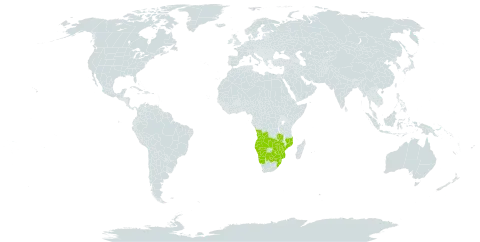Leaves opposite to alternate, soon clustered on short shoots; petiole 3–8 mm long; lamina (1)1.5–4(5) × 0.8–3 cm, elliptic, varying slightly to ovate-elliptic or obovate, broadly cuneate to shortly cordate at base, persistently stellate pubescent on both surfaces, with 3–5 pairs of obscure lateral nerves.
Heads terminal from a tuft of usually 2 pairs of leaves (sometimes 2–3 short shoots per primary node), 2–4(5)-flowered; peduncle 1–3.5 cm long; bract 4–7 mm long, broadly ovate, concave, sometimes acuminate, or (especially lower flowers) with a short foliaceous limb, then up to 14 mm long.
Shrub, up to 1 m high, parasitic on species of Acacia, Albizia, Colophospermum etc. Young stems and petioles usually whitish pubescent. Leaves evenly stellate-pubescent at maturity, borne in dense fascicles mostly on older branches. Flowers pale yellow to orange.
Corolla 3.5–5 cm long, greenish-yellow, sometimes flushed orange, densely silky villous (sometimes less so on basal swelling); basal swelling 5–6 mm long; constriction 3 mm long; funnel shaped upper tube 3–7 mm.
Stems to 1 m or so; twigs tomentose with whitish to pale brown stellate and short dendritic hairs, glabrescent.
Berry red, 12–18 mm long with calyx, pilose.
Receptacle 1.5–2 mm long, long hairy.
Calyx 3–4 mm long, silky villous.
